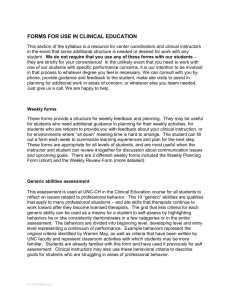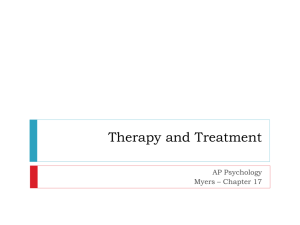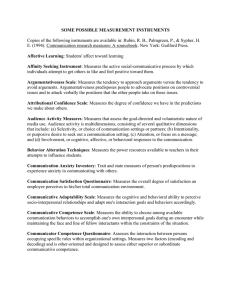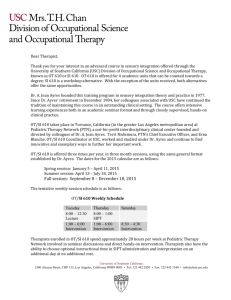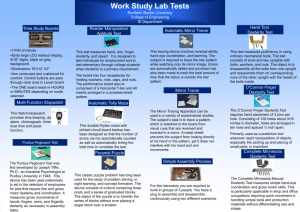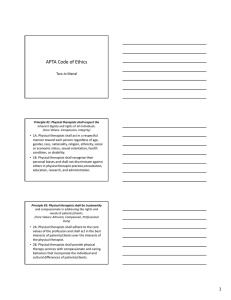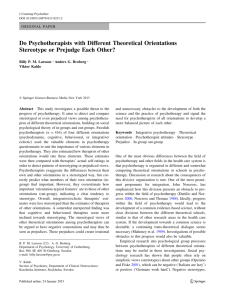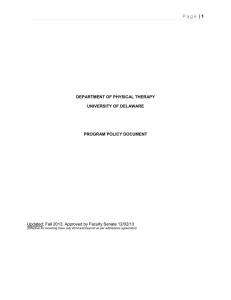Definition of the Term “Transition Assessment
advertisement
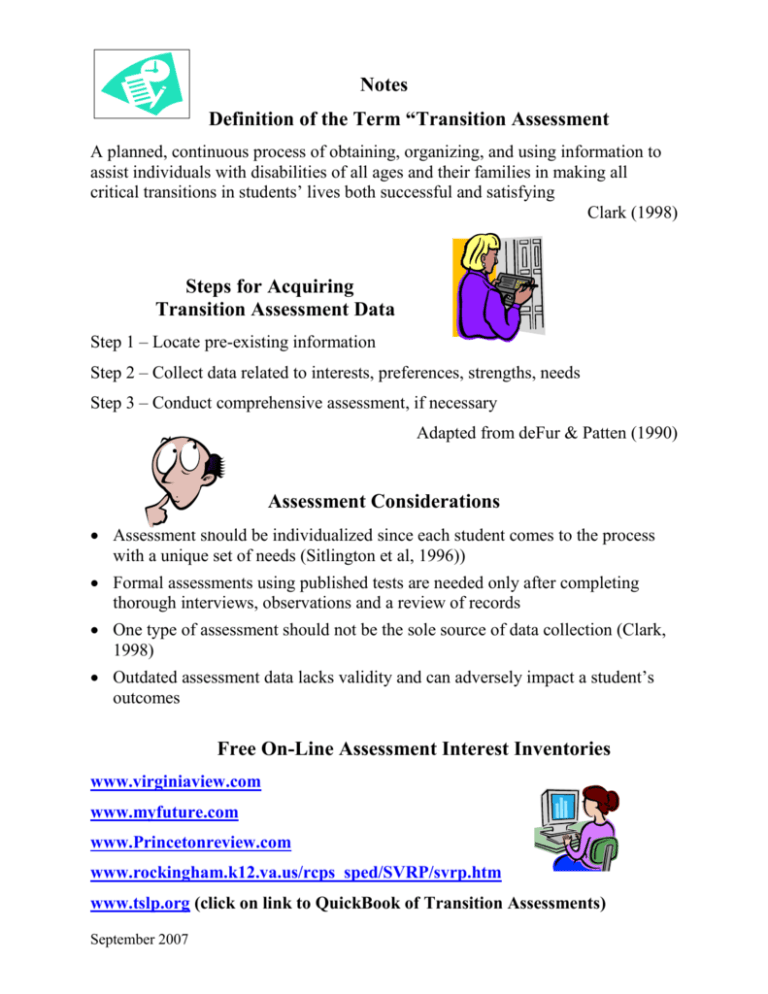
Notes Definition of the Term “Transition Assessment A planned, continuous process of obtaining, organizing, and using information to assist individuals with disabilities of all ages and their families in making all critical transitions in students’ lives both successful and satisfying Clark (1998) Steps for Acquiring Transition Assessment Data Step 1 – Locate pre-existing information Step 2 – Collect data related to interests, preferences, strengths, needs Step 3 – Conduct comprehensive assessment, if necessary Adapted from deFur & Patten (1990) Assessment Considerations Assessment should be individualized since each student comes to the process with a unique set of needs (Sitlington et al, 1996)) Formal assessments using published tests are needed only after completing thorough interviews, observations and a review of records One type of assessment should not be the sole source of data collection (Clark, 1998) Outdated assessment data lacks validity and can adversely impact a student’s outcomes Free On-Line Assessment Interest Inventories www.virginiaview.com www.myfuture.com www.Princetonreview.com www.rockingham.k12.va.us/rcps_sped/SVRP/svrp.htm www.tslp.org (click on link to QuickBook of Transition Assessments) September 2007 TYPES OF ASSESSMENTS Achievement • Measures what a student has learned from an academic curriculum Learning Styles • Ways that students learn Learning Strategies Techniques students use to organize information they must learn Adaptive Behavior • Measures how well students adapt themselves to the age and cultural demands of their physical and social environments • Assesses skills such as: • Communication • Self-Determination • Personal Management Behavior/Social Skills • Measures behavior and basic interpersonal skills used in a variety of settings such as: • Sharing • Cooperating • Collaborating • Respect for others’ privacy/property • Using socially appropriate behaviors • Showing sensitivity to others’ feelings and preferences • Being sensitive to multicultural diversity • Measures environment-specific social behaviors September 2007 Work Readiness • Assesses knowledge and skills for obtaining and maintaining a job • Identifies work- related behaviors Work Samples • Simulate real work in a classroom setting • Assess interest in and ability to do specific job tasks • Are included in a comprehensive vocational assessment Aptitude • Measures areas of strength associated with certain academic and occupational skills • May indicate a student’s vocational potential or capacity to succeed in future career endeavors • Can be measured using individual tools for each area, or by using a complete battery • Includes specific Aptitudes Mechanical Spatial Perception Motor Form Perception Finger dexterity Clerical Manual dexterity Verbal Eye-hand coordination Numerical Eye-hand-foot coordination Situational Assessment • Provides a systematic observation process for evaluating performance and behaviors in a controlled or semi-controlled environment Key Players Family members General education teachers Special education teachers Paraprofessionals School counselors School nurses School psychologists September 2007 Vocational evaluators Community services representatives Occupational therapists Physical therapists Job coaches Speech/language therapists Other related service providers



